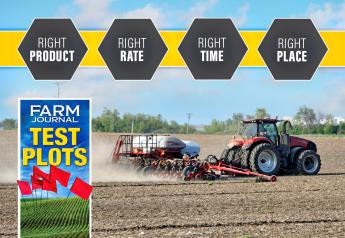Farmer Survey Highlights Need for Agronomic Data Management Services

Independent crop agronomists, local seed salesmen and ag retailers are in the best position to help farmers put agronomic data to work in their fields for one simple but important reason: Farmers identify them, in that order, as their three most-trusted advisors.
This is just one of the findings from the new Field Data Management Practices Grower Survey, which garnered responses from 839 U.S. farmers (1,000-acres-plus in size) and 709 Canadian farmers. Results from the survey, conducted by Stratus Ag Research last November through December, are now available.
The study was based on two objectives, according to Krista MacLean, project manager for the marketing research firm, which focuses entirely on agriculture. Those objectives were:
- Determine farmer practices and attitudes about field management today, and identify changes farmers plan to implement within the next three years;
- Determine farmer attitudes with respect to the collection, aggregation, analysis and ownership of data from individual farms.
Fewer than 50% of U.S. farmers use their data. 84% of U.S. farmers reported that they have equipment that captures ‘Big Data’ from one or more of these activities--planting, harvesting, fertilizer or pesticide applications. But only 42% of farmers said their data is transferred to a field data management software program for further analysis, MacLean notes.
“Those who are not using software for data analysis indicated that the data either stays on their equipment, or it’s saved and stored on an external device like a USB flash drive,” she notes.
31% of the farmers surveyed said analyzing historical data to make future field plans as the single most important reason for using data. 18% of farmers, the second-highest response, said they value the ease of documenting and recording field activities for regulatory compliance. 12% of farmers, the third-most cited response, said they value using data to keep all of their records in one place.
Farmers who said they plan to switch or adopt the use of different software in the next three years rarely cited keeping records in one place as a benefit. Instead, in a tied response, 11% of this group gave calculating financial breakeven and the ability to employ new precision ag technologies, respectively, as their third-most important reason to use data.
Farmers also shared that they consider data specific to their farm to be more useful than aggregated data. MacLean suggests that this insight points to an opportunity for would-be data advisors.
“Certainly, individual farm data is first in importance, especially to make proper variable-rate decisions and to build data on individual fields,” she says. “Better long-term decisions however, may come from incorporating aggregated data into the decision mix.”
MacLean adds that the survey revealed that fewer than 10% of U.S. corn and soybean growers currently have a third party manage and analyze farm data on their behalf.
Free isn’t really free. 58% of the farmers indicated that they use “free” software, while 42% purchase it. Farmers defined free software as being a product offered by companies or manufacturers in return for product purchases; as a product they had permission to use on a temporary basis; or a product that they simply paid no money for.
When it comes to software experiences, farmers are on the fence. Very few software brands received high performance ratings, and most farmers told Stratus researchers that they know very little about the differences in software brands. “Only 30% of growers said they are satisfied with the software they currently use or have used, regardless of whether the software is free or purchased,” MacLean reports.
The survey also revealed that farmers in the Midwest are adopting and using field data management software more than their peers in other regions of the United States. In addition, the growers using this type of software generally run large farms, are young and are investing for long-term profitability.
More information about the research is available from Stratus Research at stratusresearch.com or by calling 204-745-5853.







